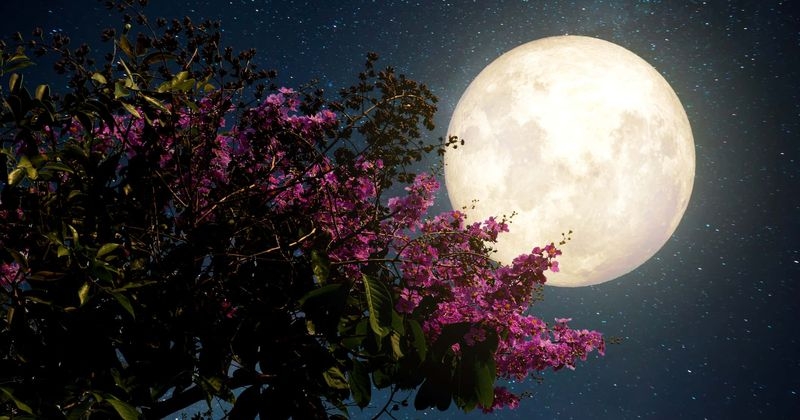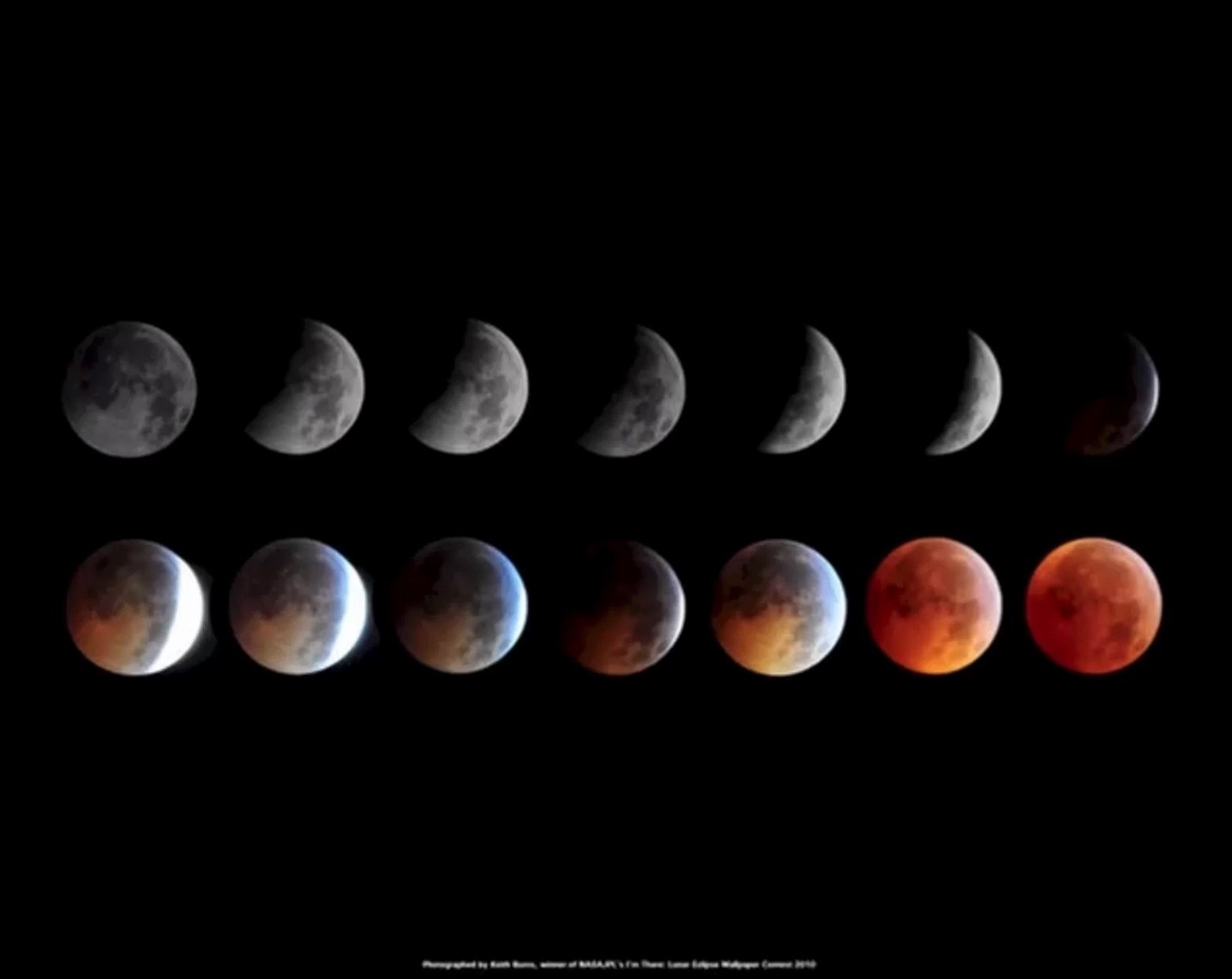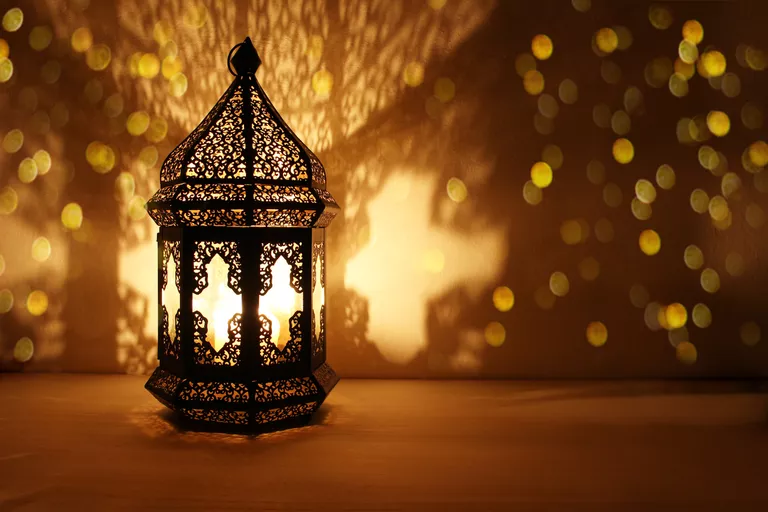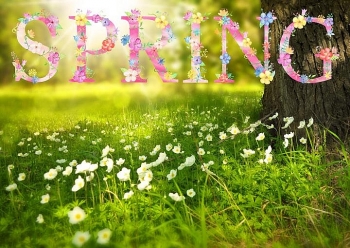Super Flower Moon: When, Where And How to Watch this May
 |
| Super Flower Moon. Photo: life.shared |
May’s full Moon rises on Wednesday, May 26! This full Moon will be the closest full Moon of the year, making it the second of two supermoons. Plus, it will coincide with a total lunar eclipse in some areas. Here’s everything you should know about this month’s full Moon, including how it came to be called the “Flower Moon.”
What is a Super Flower Moon?
May is most notable for being the turning point in the year where temperatures rise and a vast variety of flowers come into full bloom, letting the world break out into a riot of color. As such, May’s full moon has come to be known as the Full Flower Moon. The Anishnaabe tribe also called it the Blossom Moon. In Northern America, you can expect to see flowers such as bluebells, sundrops, violets, and so on, as well as lush greenery to go with the blossoms. The Apache and Lakota peoples named May’s full moon the Green Leaves Moon, while the Mohawk tribe called it the Big Leaf Moon. But there is one specific plant that’s very important during the May season - and it is, in fact, not a flower.
This plant is corn, an important staple food for Northern American peoples. According to the Algonquin tribes, May’s full moon is the Corn Planting Moon. For Native American tribes, this is the perfect time for them to start preparing the fields for farming and sowing the seeds saved up from last year. Appropriately, the Abenaki culture refers to May’s full moon as the Field Maker Moon, while the Haida tribe calls it the Food Gathering Moon. Apart from corn, other foods such as beans, squash, and potatoes are planted during this time. The Cherokee tribe called May’s full moon the Anisguti Moon, or the Planting Moon, and would traditionally perform a Corn Dance during this period to encourage a fruitful corn harvest.
How did the Flower Moon get its name?
In other parts of the world, the Full Flower Moon is better known as Vesak or Buddha Day, the most significant celebration for Buddhists all around the world. On the first full moon of May, Buddhists commemorate the birth, enlightenment, and passing of the Buddha. Devout practitioners are encouraged to renew their intention to adhere to sacred Buddhist principles, as well as refrain from all forms of killing and violence, including eating meat. Celebrations include giving charity to the poor, disabled, and otherwise marginalized groups in society. Depending on your location, you may witness the spectacular practice of releasing thousands of caged birds into the air as a symbolic gesture of liberation, though this tradition is illegal in countries such as Singapore because it may cause harm to local ecosystems.
Pagans, on the other hand, associate the Full Flower Moon with the element of fire, and thus often celebrate it by lighting bonfires and engaging in other magical fire rituals to bring prosperity. Powerful colors for the Full Flower Moon include fiery colors like red, yellow, and orange. This is a good time to tend your garden and let the seeds you’ve planted blossom - both literally and metaphorically. Cultivate your passions and desires, encourage them to burst forth into bloom, and you will be rewarded with abundance in various forms in your life.
Why is it called The Flower Moon?
 |
| Photo: indiatimes |
The full Moon names used by The Old Farmer’s Almanac come from a number of places, including Native American, Colonial American, and European sources. Traditionally, each full Moon name was applied to the entire lunar month in which it occurred, not solely to the full Moon.
The Flower Moon
May’s Flower Moon name should be no surprise; flowers spring forth across North America in abundance this month!
- “Flower Moon” has been attributed to Algonquin peoples, as confirmed by Christina Ruddy of The Algonquin Way Cultural Centre in Pikwakanagan, Ontario.
- May’s Moon was also referred to as the “Month of Flowers” by Jonathan Carver in his 1798 publication, Travels Through the Interior Parts of North America: 1766, 1767, 1768 (pp. 250-252), as a likely Dakota name. Carver stayed with the Naudowessie (Dakota) over a period of time; his expedition covered the Great Lakes region, including Wisconsin and Minnesota areas.
- Henry David Thoreau sparked to Native American Moon names as well, referencing the Flower Moon and Carver when he wrote about Native Americans.
Alternative May Moon Names
May’s Moon names tend to speak to the arrival of spring and all that it entails!
The Cree names Budding Moon and Leaf Budding Moon celebrate the awakening of local flora, which really begin to leaf out now in many areas. Similarly, Planting Moon (Dakota, Lakota) marks the time when seeds should be started for the farming season ahead.
The activities of animals marked spring’s arrival, too, which is highlighted by the Cree names Egg Laying Moon and Frog Moon, as well as the Oglala term Moon of the Shedding Ponies. All three names indicate that warmer weather is on the way, Almanac noted.
When to see the full moon in May 2021
May’s full Flower Moon reaches peak illumination at 7:14 A.M. (EDT) on Wednesday, May 26. It will be below the horizon at this time, so plan to venture outdoors the night before (Tuesday, May 25) or on Wednesday night to get the best view of the bright full Flower Moon! Find out what time the Moon will be visible in your area with our Moonrise and Moonset Calculator.
Don't miss the total lunar eclipse!
In some parts of the world, this month’s full Moon coincides with a total lunar eclipse! A lunar eclipse occurs when Earth stands directly between the Moon and the Sun, which results in Earth casting its shadow on the Moon. During a total lunar eclipse, the Moon is fully obscured by Earth’s shadow, giving the Moon a reddish hue. This phenomenon is where the term “blood moon” comes from.
This total lunar eclipse occurs in the very early morning hours of May 26 and will be visible for stargazers in western North America, western South America, eastern Asia, and Oceania. In the U.S., those who are located east of the Mississippi will experience a partial lunar eclipse instead. The Moon will be very low in the sky during the eclipse, so find a high vantage point with a clear horizon for the best view!
Wildflowers in Bloom
 |
| Photo: pinterest |
The Full Moon of May is known as Flower Moon to signify the flowers that bloom during this month. There is a myriad of wildflowers which bloom in May in the Northern Hemisphere, where these traditional Full Moon names originated. For example, many types of anemone, wild garlic, indigo, bluebells, lupine, sundrops, and violets, to name just a few. It is no wonder that the colorful displays these flowers create in nature have inspired people to name this time after them.
Other names for May's brightest Moon phase are Corn Planting Moon, Mother's Moon, and Milk Moon, from the Old English Rimilcemona which means Month of Three Milkings, when cows were milked three times a day. Some sources refer to it as Hare Moon, but this name is more common for the March Full Moon, Timeanddate cited.
Next Full Moon
The next full Moon is the full “Super Flower Moon Eclipse,” which will occur on Wednesday, May 26, 2021.
It’s set to be an even bigger-looking full Moon than the “Super Pink Moon,” though the closest supermoon of the 21st century will occur on December 6, 2052.
Flower Moon 2022
16 May 2022, 05:14
Times for the Flower Moon vary by time zone. Times and dates are based on the local time in Norwich. Change location
Traditional Full Moon Names
- Wolf Moon – January
- Snow Moon – February
- Worm Moon – March
- Pink Moon – April
- Flower Moon – May
- Strawberry Moon – June
- Buck Moon – July
- Sturgeon Moon – August
- Harvest Moon – September or October
- Full Corn Moon (Harvest) – September
- Hunter's Moon (Harvest) – October
- Beaver Moon – November
- Cold Moon – December
Local Date and Time for May 2021 Full Moon in major cities around the world:
Los Angeles, San Francisco, Vancouver: May 26, 2021 - 4:13am PDT
Denver, Salt Lake City, Calgary: May 26, 2021 - 5:13am MDT
Chicago, Houston, San Antonio: May 26, 2021 - 6:13am CDT
New York, Toronto, Atlanta: May 26, 2021 - 7:13am EDT
London, Manchester, Dublin; May 26, 2021 - 12:13pm BST
Paris, Rome, Berlin; May 26, 2021 - 1:13pm CEST
Athens, Istanbul, Helsinki: May 26, 2021 - 2:13pm EEST
Dubai, Abu Dhabi, Muscat: May 26, 2021 - 3:13pm +04
Bangalore, Mumbai, New Delhi: May 26, 2021 - 4:43pm IST
Singapore, Kuala Lumpur: May 26, 2021 - 7:13pm +08
Perth, Hong Kong, Beijing: May 26, 2021- 7:13pm AWST
Sydney, Brisbane, Melbourne: May 26, 2021 - 9:13pm AEST
Why you need patience to see the ‘Super Flower Moon’
 |
| Photo: wallpapersafari |
Perhaps the most important thing to remember is that the specific time the Moon appears on your horizon will be a little bit later than apps and charts will tell you. After all, the Moon has to rise above anything on the horizon, and any buildings blocking your view, before you will see it. So get in position just after the Moon is due to rise in your location, and stay there for at least 15 minutes. You will see it, if the skies are clear. The only way of definitely not seeing the “Super Flower Moon” is to run out of patience too early and step away from the window or go back indoors, according to Forbes.
How many supermoons are there in 2021?Four, with the “Super Pink Moon” being the second. When is the next supermoon? That happens next month with the rise of the “Super Flower Moon,” which will be the biggest and best supermoon of 2021. However, it will also be a lunar eclipse. |
 Ramadan: Dos and Donts, Why It Is The Most Important for The Muslim Community Ramadan: Dos and Donts, Why It Is The Most Important for The Muslim Community Ramadan is the ninth month of the Islamic lunar calendar, observed by practicing Muslims as a month of fasting, reflection, and prayer. It commemorates ... |
 What is the Vernal Equinox: Start Spring, Meaning, Celebration, Horoscope What is the Vernal Equinox: Start Spring, Meaning, Celebration, Horoscope What is the Vernal Equinox: Start Spring, Meaning, Celebration, Horoscope - What the equinox means for YOUR star sign and everything to Know. |
 What is Critical Race Theory? What is Critical Race Theory? The phrase “critical race theory” has been hotter again after it was condemned by Florida Gov. Ron DeSantis. Let’s check out what it is, who ... |


























